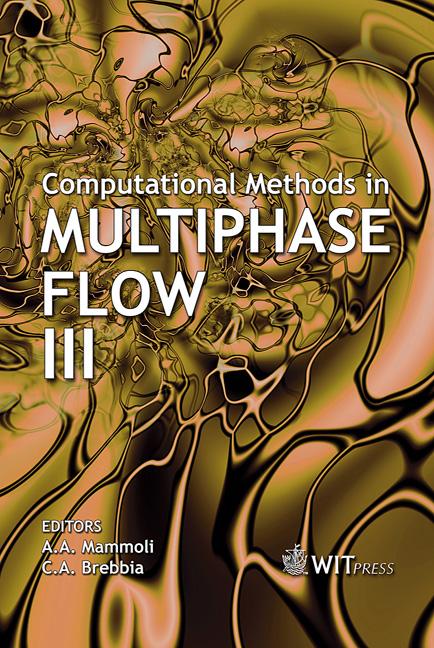The Dispersion Of A Light Solid Particle In High-Reynolds Number Homogeneous Stationary Turbulence: LES Approach With Stochastic Sub-grid Model
Price
Free (open access)
Transaction
Volume
50
Pages
10
Published
2005
Size
775 kb
Paper DOI
10.2495/MPF050241
Copyright
WIT Press
Author(s)
M. Gorokhovski & A. Chtab
Abstract
In the framework of the LES approach, the simple stochastic model of turbulent cascade with intermittency is introduced in order to represent the interaction between a solid particle and turbulence at sub-grid scales. The computation of the Lagrangian statistics of a light particle in homogeneous stationary turbulence reproduced the results of measurements: (i) for the velocity statistics, the numerical results were in agreement with classical Kolmogorov 1941 phenomenology; (ii) the computation of the velocity increment at different time lags revealed, however, the strong intermittency. Keywords: dispersion, LES approach, turbulence, intermittency. 1 Introduction During the past years, it has been recognized that for computation of high- Reynolds turbulent gas flow, the large eddy simulation (LES) approach (integration of 3D filtered Navier-Stokes equations with effective sub-grid eddy viscosity model) provides accurate local estimates of statistical quantities [1]. Recently [2], this approach was rigorously formulated from the group-theoretical analyses. Applying the LES approach to computation of turbulent flow with dispersed phase, one can expect that at each time, the momentum transport from flow to particles can be predicted accurately. However there is a problem: the interactions between gas and small particles are often characterized by length (or time) scales, which are not resolved by LES approach. Such interactions need to be modeled.
Keywords
dispersion, LES approach, turbulence, intermittency.





